Supreme Court ends dramatic, divisive term with swift shift right: Analysis
- Oops!Something went wrong.Please try again later.
- Oops!Something went wrong.Please try again later.
- Oops!Something went wrong.Please try again later.
- Oops!Something went wrong.Please try again later.
In the end, the Supreme Court justices didn't even take the bench to say goodbye.
The most dramatic, divisive and impactful term in a generation came to a close with the six men and three women in the middle of it all staying far from public view, declining to read their final opinions aloud, holed up inside a courthouse wrapped in security fencing – while people chained themselves to it outside.
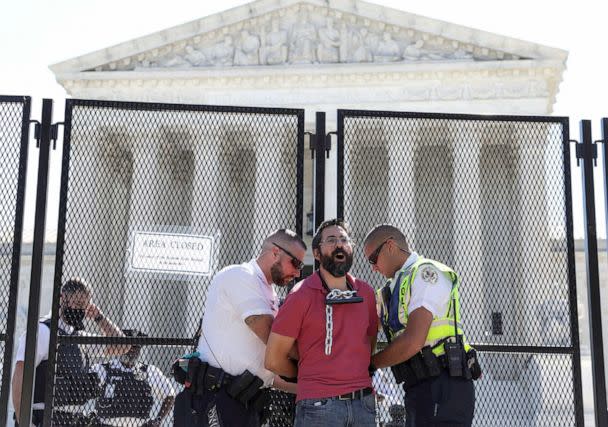
Over the last nine months, the court's conservative majority -- emboldened by three appointees of former President Donald Trump – put its foot on the gas, unbowed by protests, the alleged attempted assassination of one of their own, a leaked draft opinion, and a chief justice urging them to slow down.
"There are moments where I am deeply, deeply disappointed," Justice Sonia Sotomayor said at a public appearance days before the court's blockbuster conclusion. "I lick my wounds for a while. Sometimes I cry. And then I say, okay – let's fight."
Far-reaching decisions on abortion, gun rights, religious freedom, vaccine mandates, and environmental regulation, taken together, mark astonishing advancement of a decades-long conservative project to transform American law and settled precedent.
"The justices are being just really clear about the lines between the legislative branch and the executive branch. These are all very positive developments," said West Virginia Attorney General Patrick Morrisey, a Republican who notched several legal victories at the court this year.
Justice Clarence Thomasa>, the most senior conservative, hinted strongly at where they could be headed from here: "We should reconsider all of this court's substantive due process precedents," he said, specifically citing those protecting same-sex marriage and intercourse and contraception.
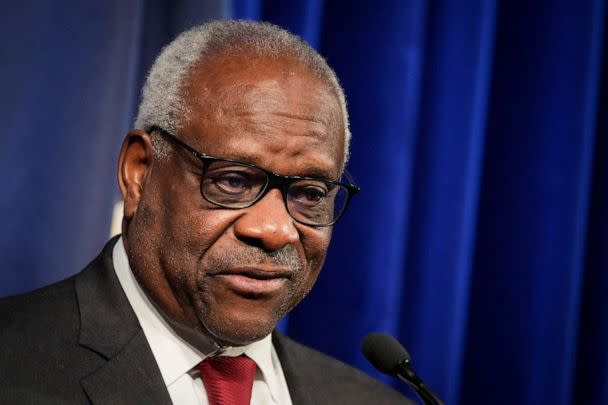
The complete overturning of Roe v. Wade was both a pinnacle moment and opening gambit in a decades' long campaign.
"It means we get to have conversations, debates in the public square that didn't matter before. They were theoretical before, and now they're real," said Marjorie Dannenfelser, president of Susan B. Anthony Pro-Life America, the anti-abortion movement's influential political arm.
Since October, the court has sharply reined in the authority of federal agencies over matters of public health and safety; empowered state governments to set policy and election law; elevated history and tradition as the arbiter of gun restrictions; and, taken steps to deconstruct separation of church and state.
"The court is engaged in a long clean up enterprise of decades of religious liberty law that went far astray," said Mark Rienzi, law professor and director of the Center for Religious Liberty at Catholic University. "It's actually not the end of the world if some kid sees some coach say a prayer, even if the kid doesn't agree with whatever the coach's religious beliefs are."
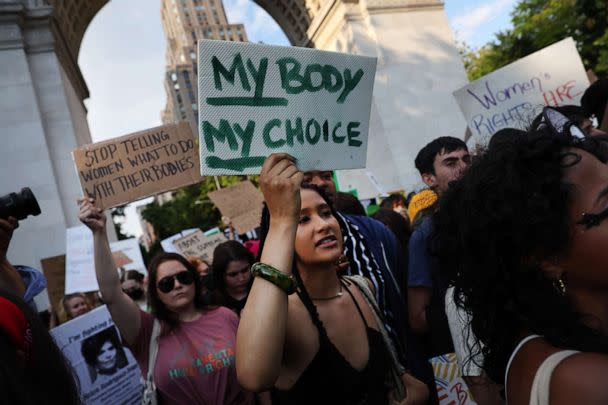
Rulings in the most contentious and high-profile cases ran counter to public opinion and may be driving an erosion in public faith in the court itself, some experts say.
Confidence in the justices was already at a historic low when the term began and has slumped even lower, according to Gallup, which has polled Americans on their views of the court for 50 years. Only one in four approves of the work being done.
"One thing that has been destabilizing is the outrageous behavior of the Supreme Court of the United States in overruling not only Roe v. Wade, but essentially challenging the right to privacy," President Biden said Thursday while overseas. "I could understand why the American people are frustrated."
But Biden has stopped short of questioning the legitimacy of the court's decisions, and, in what could be seen as a lifeline to the embattled institution, implicitly endorsed its stability -- rejecting demands from the left to back expansion of the court and sweeping reforms to its powers.
Inside the justices' chambers, where civility and collegiality are prized, there are signs both have sharply deteriorated. An unprecedented leaked draft opinion in May triggered an equally unprecedented probe to find the leaker, which remains underway.
"When you lose that trust, especially in the institution that I'm in, it changes the institution fundamentally," Justice Thomas said at a public conference last month. "You begin to look over your shoulder. It's kind of an infidelity that you can explain it, but you can't undo it."
Remarkable turnover in membership -- four new justices seated in the last five years -- has compounded challenges in trust and relationship-building among justices. The COVID-19 pandemic has made the situation worse, former court insiders say, forcing remote work and reducing how much time the justices spend together in person.
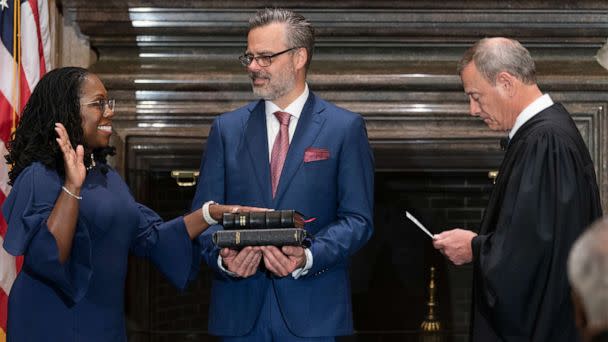
Enter Ketanji Brown Jackson.
Sworn in Thursday, Jackson becomes the first black woman justice on the nation's highest court, replacing retiring Justice Stephen Breyer.
"She's probably thanking her lucky stars that she is not there right now," said Jackson friend and former colleague Rachel Barkow, vice dean of NYU School of Law. "She knows what she's getting into with this court. She knows the personnel. But she's stepping into an institution that, you know, unfortunately for all of us, I think is just not the institution that it once was."
Justice Jackson's left-leaning judicial philosophy may not change the ideological balance on the court, but – like every new justice – she will transform the bench in untold and unpredictable ways.
Her friends describe a high-energy optimist, disarming personality, dogged consensus-seeker with a legal perspective that's unmatched by her peers: Jackson is the first justice to be a former federal public defender and first to hail from Miami, Florida. At 51 years old, her tenure could last decades.
MORE: Judge Jackson takes empathetic approach to impartiality: ANALYSIS
"No doubt that the justices on the Supreme Court matter," said Attorney General Morrisey, "but I would also note that elections matter, because the people get to choose their representatives, and those are the people that should make the major decisions of the day."
The court may be unelected but still has its fair share of major decisions to make.
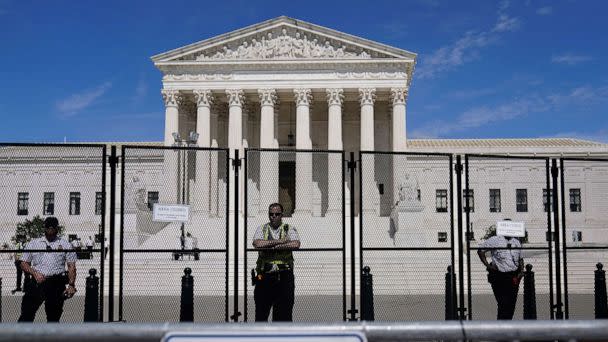
When the justices return this fall, they will hear major cases on environmental protection of wetlands; religious liberty and discrimination against LGBTQ people; the fate of Affirmative Action in college admissions; and, the role of state courts verses state legislatures in setting election law, to name a few.
MORE: Supreme Court to hear redistricting case that could upend state election laws everywhere
Its decisions in those cases -- and the ones decided this year -- will loom large over the consequential midterm elections in November. Republicans and Democrats are using the court to leverage turnout among key voting groups.
As the court enters its 234th year, one thing is certain: The institution and its members remain works in progress – now dominated by a conservative majority – but one that consistently shows it can defy expectations, good and bad.
Supreme Court ends dramatic, divisive term with swift shift right: Analysis originally appeared on abcnews.go.com
